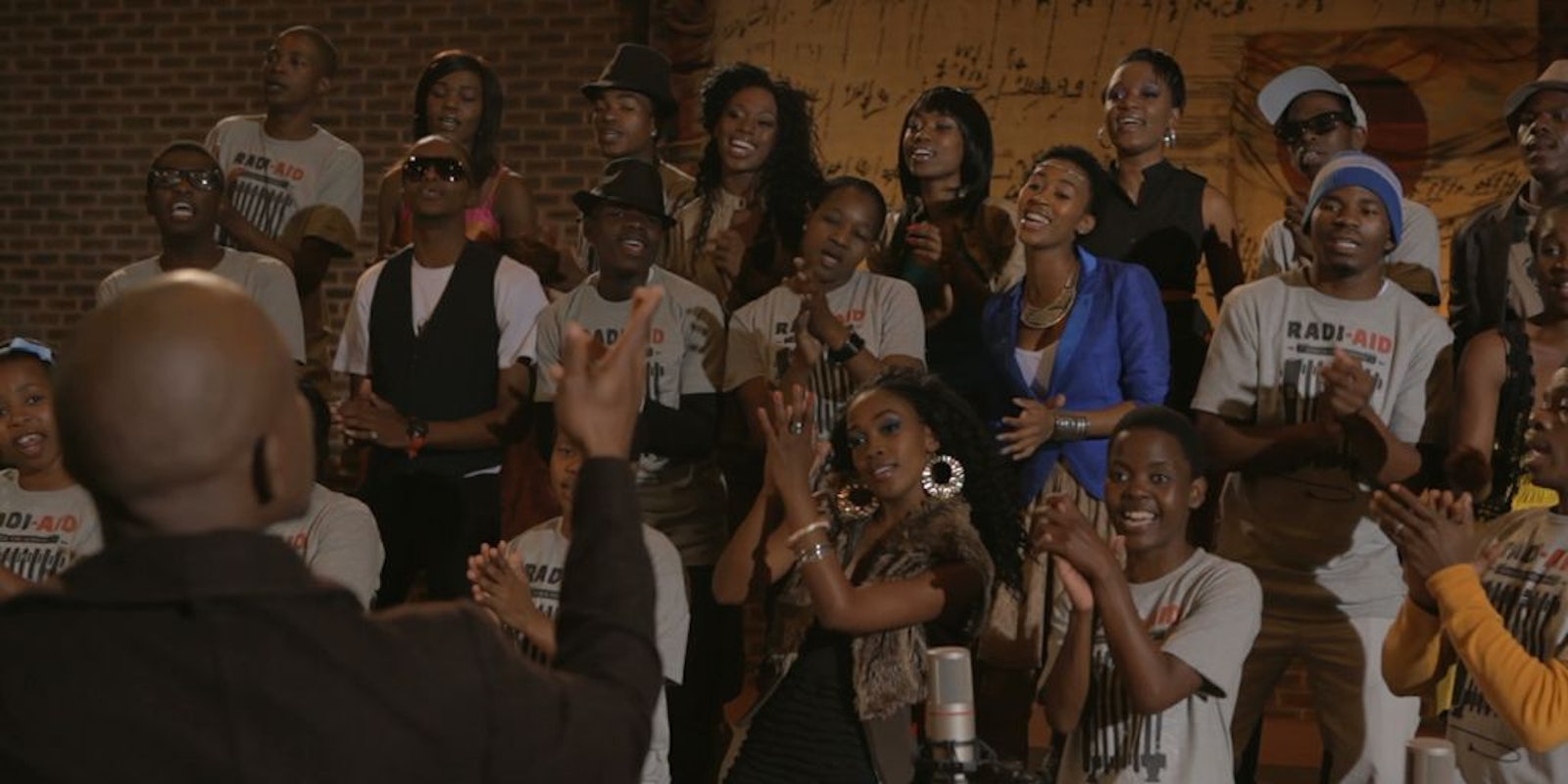Africa For Norway are an African non-profit dedicated to helping poor Norwegians get some circulation back into their chapped hands, by gathering and shipping radiators and space heaters to the beleaguered country. They are promoting this campaign, Radi-Aid, with a song and video.
In the midst of winter, the Nordic country awkwardly straddling the Arctic Circle loses its watery light at 4:00 in the afternoon and doesn’t see it again until after 10:00 in the morning. Africans, with their surfeit of sunshine and heat, have been moved by Norway’s plight to write, record and sell a charity single and film a companion video.
Just kidding.
The song and video were actually made by a Norwegian group, The Norwegian Students’ and Academics’ International Assistance Fund, with African help: The music was written by Wathiq Hoosain, the lyrics by Bretton Woods and the video was produced by Ikind Productions. The point they are trying to make is how tunnel-vision Western images of Africa are.
“Imagine if every person in Africa saw the ‘Africa for Norway’ video and this was the only information they ever got about Norway. What would they think about Norway?”
Images in both Western press and Western aid group marketing materials reduce a huge, varied continent to a caricature of woe. Even if that engages in the short term, it does a disservice in the long run.
“Africa should not just be something that people either give to, or give up on.”
Anyone with any familiarity with Africa knows how much growth and hope characterize the continent, even as its residents continue to struggle with issues ranging from corruption to infrastructure problems.
Those behind the video hope that the make-believe charity campaign will jar people into considering how unlikely a simplistic cartoon of Africa is to be remotely accurate. There’s a practical reason for this, not just a moral one. If supporters and funders of Africa are unaware of, say, the surge in entrepreneurship among the young, bright things there, they won’t be there to support it, spending their charity money solely on powdered milk and malaria vaccine.
The problem with earlier aid models, according to someone who has worked with aid groups on the continent and who wishes to remain anonymous, is how much of the funding has translated into the solid gold toilets studding the palaces of the continent’s strong men and how proportionally little of it got to the people who need it.
A funny video is hardly likely to complete the shift away from centralized charity, though it could hardly hurt it. Although, if the comments by YouTube users beneath the video there are any indication, it may not penetrate the thick fog of preconceptions with any regularity.
The joke depends on an ironic presumption of Norway’s oil-based material superiority to Africa, so it may have a limited effect to those of us who know Norway as a hag-ridden, murky, ice-forest full of barbarous trolls.
If there is one thing that can be carried away from this campaign beyond the Africa-specific, it may be that we as a species tend to reduce peoples to stereotypic shorthand with an alarming consistency.
Photo by SAIH-Norway/YouTube


